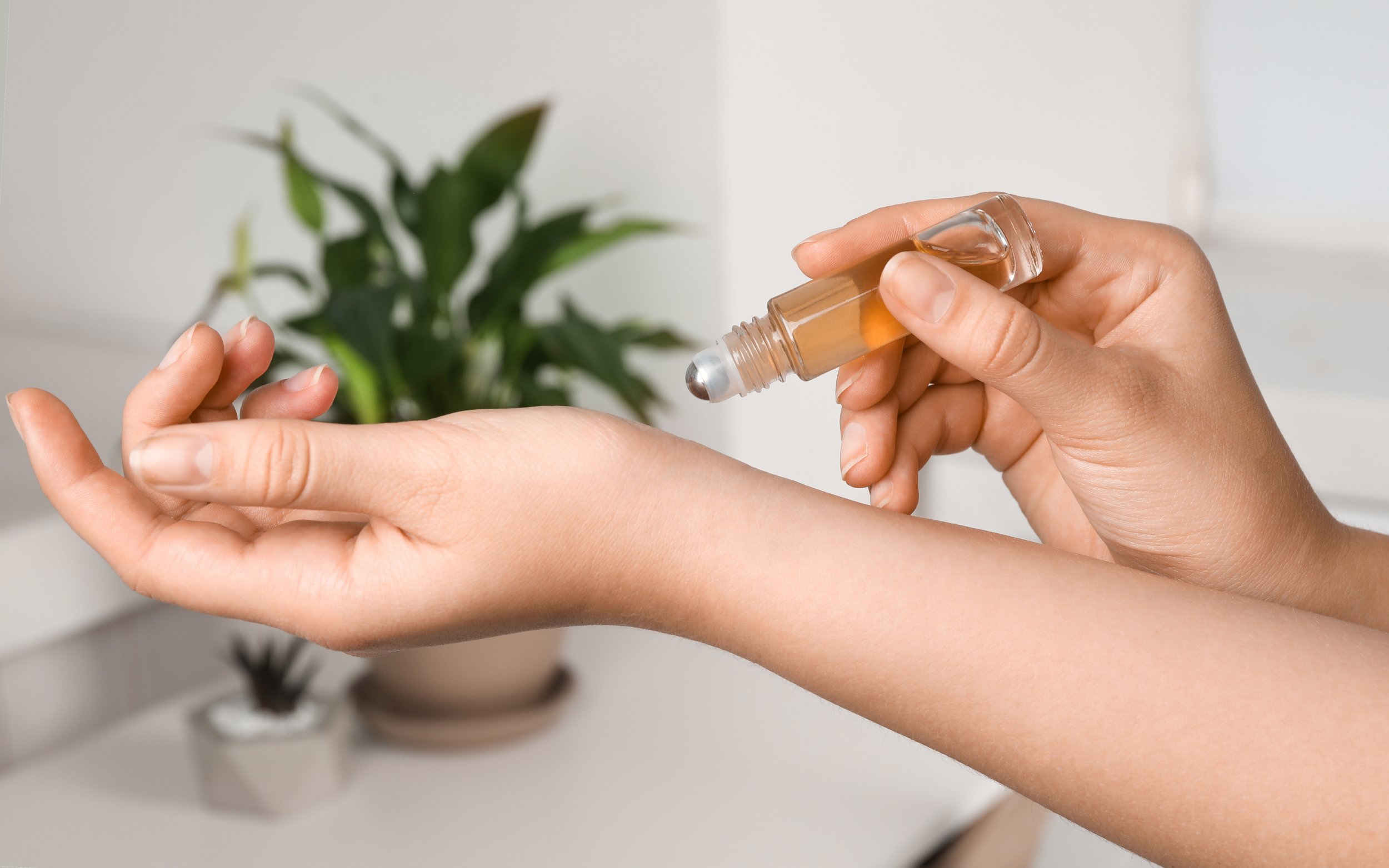30 Essential Oil Tips and Tricks for Beginners
Embarking on the journey of aromatherapy as a newcomer feels like stepping into a world rich with captivating scents and promising benefits. I remember beginning my journey over 10 years ago and was filled with a sense of curiosity and wonder as I learned about essential oils, diffusers, rollers, inhalers and more. The idea that a few drops of these potent, nature-derived essences could influence my mood, wellness, and even the ambiance of my surroundings is both exciting and intriguing. Now as a Certified Aromatherapist, I not only understand the science and chemistry of how and why essential oils work, but I get to help others experience the beautiful benefits of aromatherapy for themselves.
If you are new to using essential oils, here are 30 tips and tricks to keep in mind when using essential oils:
Before Using Essential Oils:
1. Research Thoroughly: Learn about each essential oil's properties, benefits, and safety considerations before using them. Check out my blog for more valuable information including 10 Things I Wish I Would Have Known When I First Started Using Essential Oils!
2. Quality Matters: Opt for high-quality, pure essential oils from reputable sources to ensure efficacy and safety.
3. Patch Test: Always perform a patch test to check for any adverse reactions or allergies before using an essential oil on your skin. This is especially important if you tend to have sensitive skin.
Here's how to do a patch test:
Select the essential oil you want to test. It's recommended to start with a single oil rather than a blend, as this helps you pinpoint any potential sensitivities. Some essential oils are more likely to cause skin sensitization so be mindful when using citrus oils, clove, and cinnamon.
Select a small area of the skin to conduct the patch test. The inside of your wrist, forearm, or behind the ear are commonly used spots.
Dilute the essential oil before applying it to your skin. Mix one or two drops of the essential oil with a carrier oil like coconut oil, jojoba oil, or almond oil. This helps prevent potential irritation from using undiluted essential oil.
Make sure the patch test area is clean and dry before applying the diluted essential oil. Gently apply a small amount of the diluted essential oil to the patch test area. Use a cotton swab or your fingertip for this purpose.
Allow the oil to sit on your skin for at least 24 hours. During this time, avoid washing the area.
After 24 hours, examine the patch test area for any signs of redness, itching, swelling, or irritation. If you notice any adverse reactions, discontinue use immediately. If you experience no negative reactions during the 24-hour period, it's likely safe to use the tested essential oil in your skincare or aromatherapy routine.
4. Dilution is Key: Most essential oils need to be diluted before applying to the skin. Follow recommended dilution ratios to prevent irritation. Get my free dilution guide here.
5. Carrier Oils: A carrier oil is known as a fixed or base oil that is a vegetable, nut or seed oil that is used to dilute the essential oil and “carry” it through the skin into the body. Carrier oils do not lessen the therapeutic benefits of essential oils; instead, they spread essential oils farther on the skin and actually help the body absorb the essential oils faster. Essential oils are highly volatile and evaporate quickly. Carrier oils are heavier and do not evaporate; instead, they fully absorb into the skin. In addition, they have their own beneficial properties and are a good source of vitamins such as A, D, and E as well as fatty scores needed by the skin to maintain tone and elasticity. Use carrier oils (e.g., coconut, jojoba, almond) to dilute essential oils and enhance their absorption into the skin.
6. Storage: Store essential oils in dark glass bottles, away from direct sunlight and heat, to preserve their potency and chemical properties.
7. Avoid Eyes and Mucous Membranes: Keep essential oils away from your eyes, ears, and sensitive areas. If accidental contact occurs, apply a carrier oil, not water.
8. Choose sun safe essential oils when applying to the skin: Some essential oils are photosensitive. Photosensitization is a reaction to a substance applied to the skin that occurs in the presence of UV light. Reactions can be skin irritations, discoloration, redness, rash, or burn. Essential oils high in furanocoumarins can cause this reaction such as most citrus oils like bergamot, lemon, lime and grapefruit. Be mindful of blends also containing these essential oils and when in doubt always check the labeled safety recommendations.
Using Essential Oils:
9. Aromatherapy Diffusers: Use diffusers to disperse essential oils into the air for inhalation and mood enhancement. Make sure to always diffuse in a large well-ventilated space.
10. Inhalation: Inhale directly from the bottle or add a few drops to a tissue or inhaler for quick stress relief. Aromatherapy inhalers are incredibly helpful. They are small passive diffusers that you can use when needing support. They contain a cotton wick inside a glass tube that has small holes at the top. These are NOT to be placed within the mouth. You hold them several inches below the nose while taking slow deep breaths for 30-60 seconds. I love them because they are discreet so you can use them without disturbing others around you, they are portable and easy to travel with, and safe for all ages. They also allow us to use photosensitive essential oils without risking any reactions in the sun.
11. Massage: Blend essential oils with carrier oils for a relaxing and therapeutic massage experience.
12. Bath Time: As Hippocrates said “The way to health is to have an aromatic bath and scented massage every day.” Aromatic baths are one of the most popular ways to reduce stress and promote relaxation. Keep in mind that essential oils do not mix with water as they are hydrophobic. What this means is that you never want to add the essential oils directly to the bath without diluting the essential oils or using a proper dispersant.
13. Freshen a space: Add a drop of essential oil to a cotton ball and place inside garbage can, diaper pail, or even toilet paper roll. Essential oils are a great way to purify and refresh a space. You can also add 5 drops of essential oil with 1/2 cup of baking soda and sprinkle on carpet to refresh carpet odors. Leave on for 15-30 minutes then vacuum.
14. DIY Skincare: Incorporate essential oils into your skincare routine by adding a few drops to cleansers, serums, or moisturizers. Or make your own toner using hydrosols. My favorite toner recipe is: 2 parts witch hazel, 1 part lavender hydrosol and 1 part rose hydrosol.
15. Hair Care: Mix essential oils like rosemary into your shampoo, conditioner, or hair masks to promote healthy hair and scalp.
Overnight hair mask recipe:
4 drops Lavender essential oil
4 drops Rosemary essential oil
4 drops Cedarwood essential oil
Add essential oils to 15ml glass dropper bottle. Fill the rest with jojoba oil, fractionated coconut oil or argan oil (or a combination of each). Shake gently to combine. Apply a few drops to fingers and massage into hair and roots 8 hours before washing hair. *Recipe is for 15ml and is 3% dilution.
16. Custom Perfume: Create a unique personal fragrance by blending essential oils with carrier oils or alcohol.
17. Homemade Cleaning: Add antibacterial essential oils like tea tree, lemon, or lavender to DIY cleaning solutions.
18. Fabric Freshening: Spritz diluted essential oils on linens, pillows, and curtains for a natural, refreshing scent.
19. Scented Jewelry: Apply a drop of essential oil to a diffuser pendant or bracelet for subtle aromatherapy throughout the day.
Special Uses:
20. Cold and Flu Relief: Relieve congestion with steam inhalation, diffusing or adding a few drops of peppermint, eucalyptus, or laurel to bottom of shower.
21. Motion Sickness: Inhale ginger, peppermint or lemon essential oil to help alleviate nausea during travel.
22. Focus and Concentration: Diffuse rosemary, fir, pine, or citrus oils while working or studying for improved focus.
23. Bug Repellent: Use essential oils like citronella, lemongrass, or lavender to naturally repel insects.
24. Sunburn Soothe: Dilute lavender or chamomile oil in aloe vera gel to ease sunburn discomfort.
25. Minor Wounds: Apply diluted tea tree oil to minor cuts and scrapes for its antiseptic and healing properties.
26. Sleep Aid: Diffuse calming oils like lavender, cedarwood, or bergamot before bedtime for better sleep.
27. Emotional Support: Inhale oils like frankincense, ylang-ylang, or bergamot to uplift your mood.
General Tips:
28. Less is More: Start with fewer drops of essential oil and add more if needed; a little goes a long way. It is important to remember that essential oils are extremely potent and it takes a great deal of plant matter to make one bottle. Less is more!
29. Rotate Oils: To prevent sensitization, switch up the essential oils you use in your blends and routines.
30. Listen to Your Body: Pay attention to how your body responds to different essential oils and adjust usage accordingly. When I am having an “aroma craving”, I often look into the properties and benefits of that essential oil. Our bodies can tell us what we need. The longer we use aromatherapy, the more apparent this becomes.
Remember that while essential oils can offer numerous benefits, individual reactions can vary. Always consult with a healthcare professional if you have specific health concerns or questions about using essential oils, especially for therapeutic purposes.
Want to learn more about using essential oils? Check out my latest book Science of Essentials: The Essential Guide for Using Aromatherapy to Promote Health and Healing here.
Looking for more education on using essential oils for emotional health? See my blog article, The Best Essential Oils for Stress and Anxiety and 5 Tips for Using Aromatherapy for Stress Relief.
Disclaimer: This blog is for general informational purposes only and does not constitute the practice of medicine, nursing or other professional health care services, including the giving of medical advice. The use of information on this blog or materials linked from this blog is at the user's own risk. The content of this blog is not intended to be a substitute for professional medical advice, diagnosis, or treatment. Users should not disregard, or delay in obtaining, medical advice for any medical condition they may have, and should seek the assistance of their health care professionals for any such conditions.




